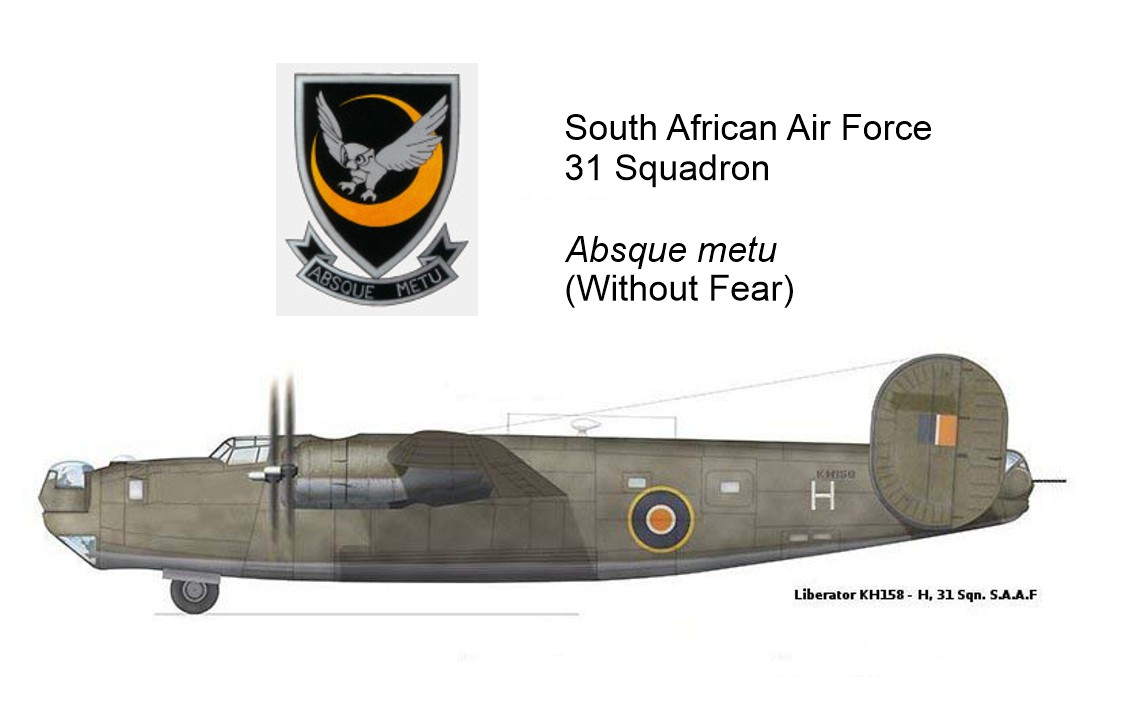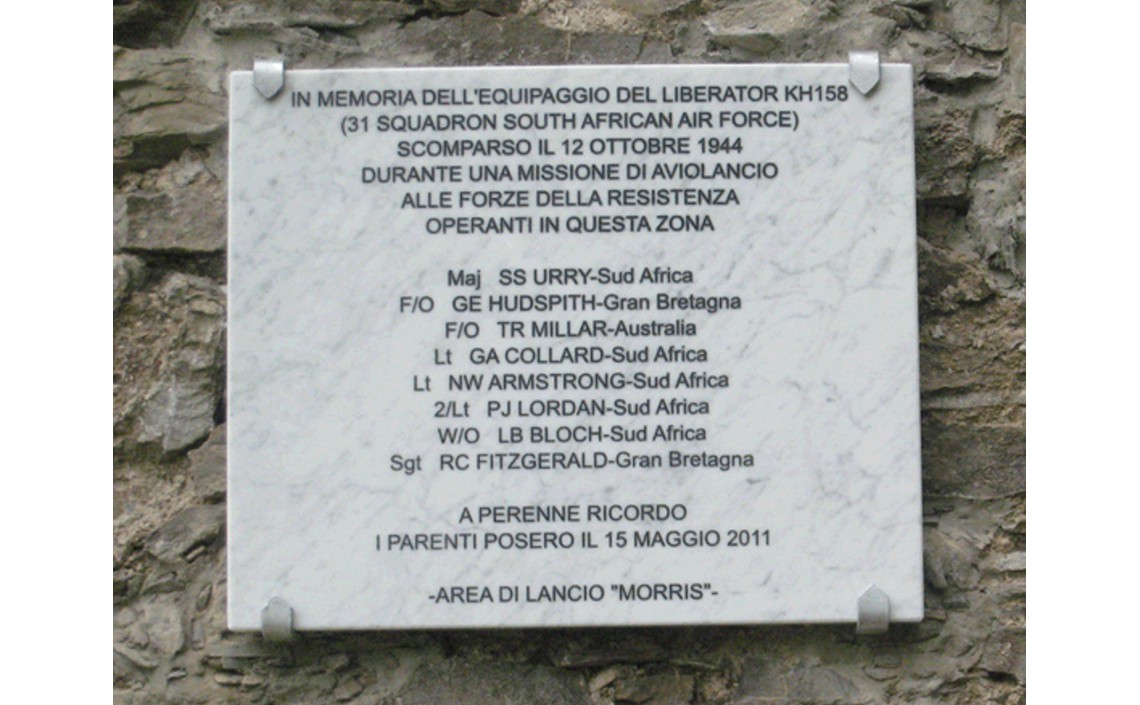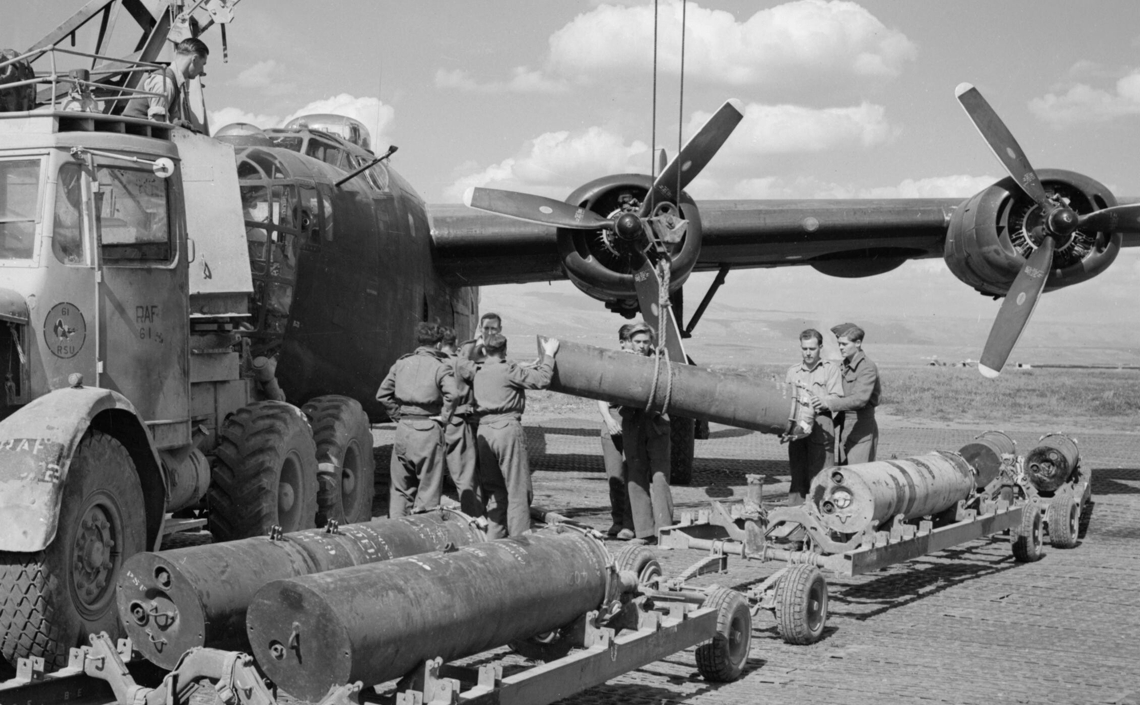
On October 12, 1944, six B-24s and 48 crew members were lost within a few hours over northern Italy. The map highlights four drop zones: MORRIS, DODGE, PARROT, and CRYSLER.
KG874 and KH154 crashed about 52 km west of their DODGE drop zone (DZ), while KH239 went down 18 km northwest of its designated DZ, PARROT. Two other aircraft searching for their DZ, CRYSLER, crashed—KG875, 82 km southwest, and KG999, 110 km southwest. The last of the B-24s, KH158H, assigned to MORRIS, was never found.
KH158H - South African AF, MORRIS Drop Zone, Italy, 1944
BackgroundIn October 1944, Allied forces had pushed the Germans north of the Gothic Line in Italy.
From air bases near Foggia in Southern Italy, SAAF 2 Wing—comprising 31 and 34 Squadrons and part of RAF 205 Bomber Group—was assigned a high-risk supply drop mission to support Partisan fighters north of Genoa in the Po Valley.
Four drop zones (DZ), codenamed Morris, Dodge, Parrot, and Chrysler, were selected, with five Liberator bombers assigned to each.
Despite poor early October weather, forecasts predicted a break on the night of the 12th, and the mission was launched. Crews were warned to turn back if weather deteriorated.
Liberator KH158H, MORRIS Drop Zone
The 12 October the conditions turned deadly. Torrential rain, low clouds, and lightning plagued the flight path.
Eleven planes returned to base, only three completed their missions, and six never came back—48 men were lost.
A critical error in the weather forecast had underestimated a shift in wind direction. Instead of a westerly wind, an easterly had pushed the aircraft roughly 60 km off course, leading five to crash into the Alps and one, KH158H, to disappear entirely.
The mission
The Consolidated B-24J-80-CF Liberator serial KH158H (cn 1314) was lost officially the Thursday 12 October 1944.
The search for KH158H was especially difficult due to the complete lack of information about the crew’s decisions during the final phase of their flight.
The last confirmed navigational fix was over the island of Elba, around 200 kilometers south of their intended target, the MORRIS drop zone. After that point, the crew had to rely on dead reckoning in poor weather and complete darkness, with no radio communication and no ground lights to guide them.
A critical shift in wind direction—from a forecasted southeast wind at 40 km/h to an actual westerly wind—went undetected and likely threw their course off significantly.
This unexpected drift was a key factor in the loss of five other B-24 bombers on the same mission, all of which crashed into mountainous terrain while attempting to locate their drop zones.
These incidents were classified as CFIT (Controlled Flight Into Terrain), where crews flew into terrain without realizing they were off course.
Our simulations consider several scenarios, all ending with the loss of KH158H during a CFIT inland, far northwest of the MORRIS DZ.



